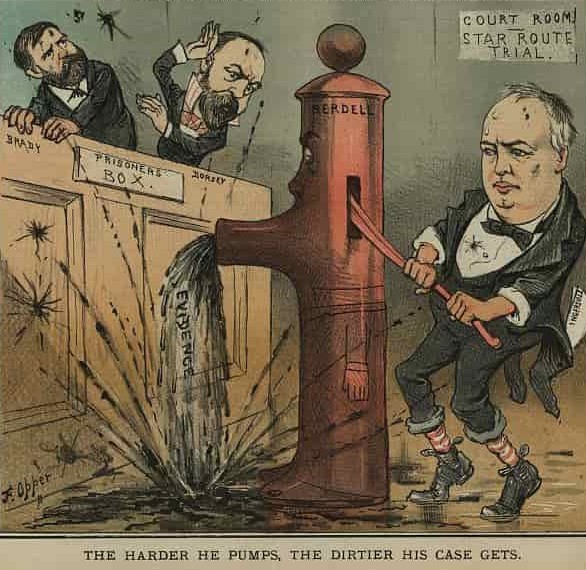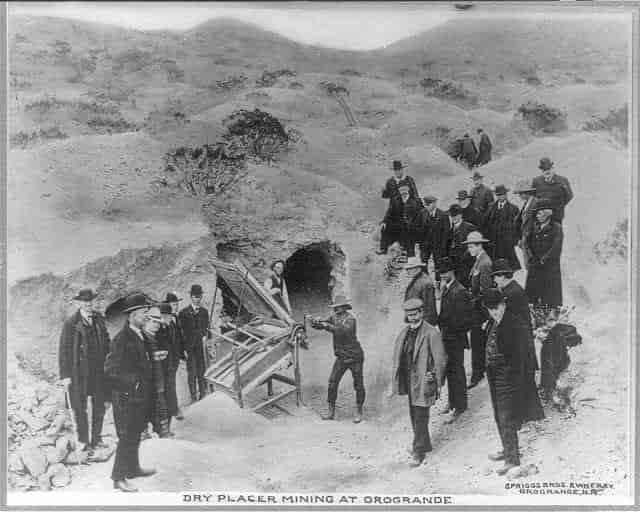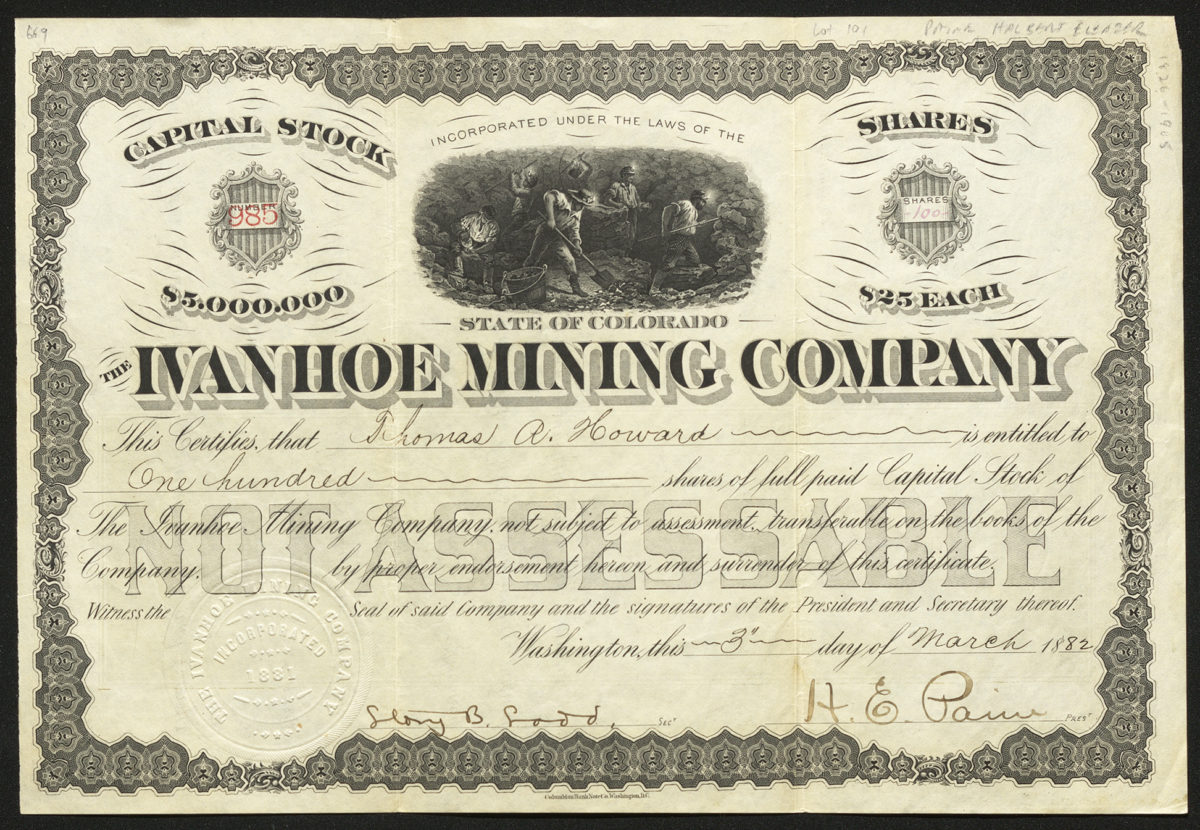
Robert Ingersoll Errs with the Ivanhoe
Orator Robert Ingersoll had a way with words, even when his Ivanhoe Mining Company failed; after repaying $200,000 to investors for their losses, he explained “I can better lose $200,000 dollars than any of these poor men can lose $200.”
Header Image: A satirical cartoon portraying Robert Ingersoll; author Frederick Opper courtesy Library of Congress [1].
“Anger is a wind that blows out the lamp of the mind.”

A placer mining operation in New Mexico; courtesy Library of Congress
The Ivanhoe Mining Company, a silver mine formerly in northwestern New Mexico, was founded by Robert G. Ingersoll in 1881. Ingersoll (1833-1899) served in the American Civil War and was a lawyer and politician, but he is best remembered as an orator. He gained fame as “the Great Agnostic,” giving controversial but well-attended lectures criticizing religion which prevented him from finding much success in politics.
Ingersoll invested in several mines including the Ivanhoe Mining Company. The property became entangled in legal troubles when rival claimants were able to register a claim on the site due to a retroactive law passed in 1880 that required claims to be worked to remain valid. Ingersoll was able to retain the mine by paying the claimants to relinquish their rights, only to find that two other claims had been registered. Ingersoll again had to pay the men off to protect his investment.
Once secured, the Ivanhoe was able to attract investors because of its association with the reputable Ingersoll, who was president of the company. In 1881, it was claimed that the Ivanhoe was the chief producer of the mines in the Black Range, and Ingersoll was quoted in the New Mexico press as saying, “any man who wants more than I have got in the Ivanhoe is a hog!” Ingersoll convinced many to put money into the mine, claiming that they would double or triple their investment.
Although Ingersoll was normally a smart investor, he made a bad call backing the Ivanhoe Mine so enthusiastically. By 1882, the investment had unraveled, and newspapers reported that “the flattering prospects proved to have been entirely deceptive,” and when “rock without any trace of silver in it was met with operations ceased and the mine was closed.” Thousands of investors lost money when stock certificates like this one became worthless, and the failure made investors nervous of mining stock markets. Ingersoll was a man of integrity, however; feeling responsible for his role in the debacle, he spent $200,000 to purchase back a large number of the worthless stocks at full value. He was quoted as saying “I can better lose $200,000 dollars than any of these poor men can lose $200, and I feel they bought on my recommendation. It is but right that I give them back their money.” (Scroll down to continue reading about the Ivanhoe Mine below)
This stock certificate has not been endorsed by Ingersoll, but it bears two other signatures of note: H.E. Paine and Story B. Ladd. Ladd was one of the members of the Hayden Expedition of 1871 that surveyed the Colorado Territory. The team explored the Yellowstone area, and images brought back with them are credited with popularizing the natural beauty of Yellowstone, which became the first National Park in the U.S.
Halbert E. Paine commanded the 4th Wisconsin Calvary for the Union forces during the American Civil War. Paine was famously principled and strong-willed. He was arrested in 1862 for refusing to obey orders when his superior, General Williams, ordered Paine to turn fugitive slaves out of his camp in Louisiana. Paine wrote back saying he would not, as:
It is notorious that the regimental camps are watched, not only by pretended owners, but also by men who hunt for pay, into whose grasp the fugitives will certainly fall the instant the guard trust them over the lines… While I command the 4th Regiment Wisconsin Volunteers they cannot, with my consent, being employed in the violation of the law for the purpose of returning fugitives to rebels.
He was arrested shortly after but soon released when the Union general holding the city of Baton Rouge was killed and a replacement was needed. Paine disobeyed orders a second time when he refused to comply with orders to burn down Baton Rouge to prevent it from falling into Confederate control. This time he avoided arrest by persuading his commanding officer of his point of view. After his military service, Paine served three terms as a U.S. Congressman.
 University of Nevada, Reno
University of Nevada, Reno
